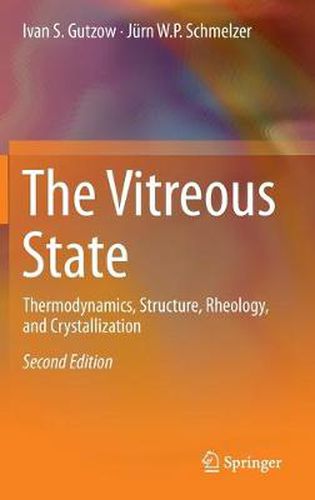Readings Newsletter
Become a Readings Member to make your shopping experience even easier.
Sign in or sign up for free!
You’re not far away from qualifying for FREE standard shipping within Australia
You’ve qualified for FREE standard shipping within Australia
The cart is loading…






This title is printed to order. This book may have been self-published. If so, we cannot guarantee the quality of the content. In the main most books will have gone through the editing process however some may not. We therefore suggest that you be aware of this before ordering this book. If in doubt check either the author or publisher’s details as we are unable to accept any returns unless they are faulty. Please contact us if you have any questions.
This book summarizes the experimental evidence and modern classical and theoretical approaches in understanding the vitreous state, from structural problems, over equilibrium and non-equilibrium thermodynamics, to statistical physics. Glasses, and especially silicate glasses, are only the best known representatives of this particular physical state of matter. Other typical representatives include organic polymer glasses, and many other easily vitrifying organic and inorganic substances, technically important materials, amidst them vitreous water and vitrified aqueous solutions, and also many metallic alloy systems. Some of these systems only form glasses under particular conditions, e.g. through ultra-rapid cooling. This book describes the properties and the formation of both every-day technical glasses and especially of such more exotic forms of vitreous matter. It is a unique source of knowledge and new ideas for materials scientists, engineers and researchers working on condensed matter. The new edition emphasizes latest experimental findings and modern theories, explaining the kinetics of glass formation, the relaxation and stabilization of glasses and their crystallization in terms of new models, derived from the framework of the thermodynamics of irreversible processes. It shows how the properties of common technical glasses, window glass, or the vitreous ice kernel of comets can be used to develop a new understanding of the existence of matter in various, unusual forms. The described theories can even find application for the description of lasers and interesting unusual processes in the universe.
$9.00 standard shipping within Australia
FREE standard shipping within Australia for orders over $100.00
Express & International shipping calculated at checkout
This title is printed to order. This book may have been self-published. If so, we cannot guarantee the quality of the content. In the main most books will have gone through the editing process however some may not. We therefore suggest that you be aware of this before ordering this book. If in doubt check either the author or publisher’s details as we are unable to accept any returns unless they are faulty. Please contact us if you have any questions.
This book summarizes the experimental evidence and modern classical and theoretical approaches in understanding the vitreous state, from structural problems, over equilibrium and non-equilibrium thermodynamics, to statistical physics. Glasses, and especially silicate glasses, are only the best known representatives of this particular physical state of matter. Other typical representatives include organic polymer glasses, and many other easily vitrifying organic and inorganic substances, technically important materials, amidst them vitreous water and vitrified aqueous solutions, and also many metallic alloy systems. Some of these systems only form glasses under particular conditions, e.g. through ultra-rapid cooling. This book describes the properties and the formation of both every-day technical glasses and especially of such more exotic forms of vitreous matter. It is a unique source of knowledge and new ideas for materials scientists, engineers and researchers working on condensed matter. The new edition emphasizes latest experimental findings and modern theories, explaining the kinetics of glass formation, the relaxation and stabilization of glasses and their crystallization in terms of new models, derived from the framework of the thermodynamics of irreversible processes. It shows how the properties of common technical glasses, window glass, or the vitreous ice kernel of comets can be used to develop a new understanding of the existence of matter in various, unusual forms. The described theories can even find application for the description of lasers and interesting unusual processes in the universe.